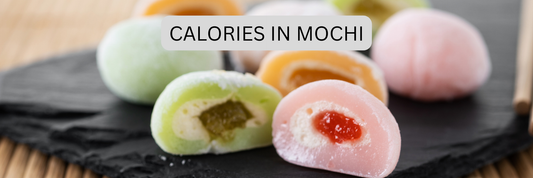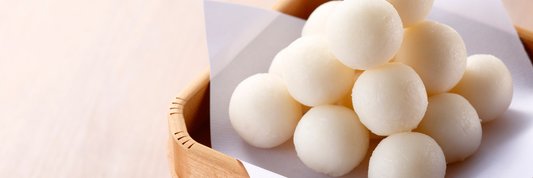Saltine crackers are one of the most iconic pantry staples—crispy, light, and endlessly versatile. Whether you’re snacking on them plain, pairing saltine crackers with soup, or using them in recipes like saltine cracker toffee, this simple square cracker has earned a permanent place in kitchens around the world. But what exactly are saltine crackers? Are they healthy? Which brands are best? In this complete guide, we’ll explore the history, nutrition facts, recipe ideas, and storage tips for saltine crackers. If you’ve ever searched for “saltine crackers calories,” “are saltines healthy,” “saltine cracker recipes,” or “best brands of saltine crackers,” this article gives you all the answers you need.
Best Homemade Saltine Cracker Recipe – Crispy & Golden
How Many Calories Are in Saltine Crackers? Complete Guide
What Are Saltine Crackers?
Saltine crackers, also known as soda crackers, are thin, square crackers made with just a few simple ingredients: white flour, baking soda, yeast, and salt. Their signature light, airy texture comes from the use of baking soda and yeast, which create small bubbles during baking. Saltines are perforated with tiny holes that prevent them from rising too much, keeping them flat and crunchy.
Originating in the late 19th century, saltines quickly became popular in North America as an affordable, long-lasting snack. Their mild flavor makes them versatile—perfect with soups, spreads, cheese, or even on their own when you want something light. Because of their bland yet comforting taste, saltines are often used as a home remedy for nausea, motion sickness, or upset stomachs.
Today, saltine crackers are found in nearly every grocery store, with iconic brands like Nabisco Premium and Keebler producing millions each year.

Nutritional Value of Saltine Crackers
Saltine crackers are simple in ingredients, but they still offer specific nutritional considerations.
- Calories: About 60 calories per 5 crackers.
- Carbohydrates: Around 11g per serving.
- Protein: Less than 1g per serving.
- Fat: Typically 1g or less.
- Sodium: 130–150mg per 5 crackers (can be high depending on brand).
Saltines are low in fat and calories, making them a convenient, portion-controlled snack. However, they are also high in sodium and low in fiber and protein, which means they don’t provide lasting satiety.
For those watching their health, low-sodium and whole-grain saltine varieties are available. Saltines are also a common go-to for people experiencing nausea because their plain, dry texture is easy to digest. However, they are not gluten-free, though gluten-free alternatives are available.
If you’re looking for balance, pairing saltine crackers with protein-rich toppings like peanut butter, hummus, or cheese makes them more nutritious.
Popular Ways to Eat Saltine Crackers
Saltine crackers are incredibly versatile and can be enjoyed in countless ways. Some of the most popular include:
- With Soups & Chili – Saltines are a natural companion to hot soups and stews, adding crunch and texture.
- As a Snack Base – Spread with peanut butter, cream cheese, or hummus for a quick bite.
- For Toppings – Add avocado, tuna salad, smoked salmon, or sliced veggies for a healthy mini-meal.
- As a Comfort Food – Eaten plain, they’re gentle on the stomach and a childhood favorite for many.
Beyond snacking, saltine crackers can be crumbled as a breading for fried chicken, used as a topping for casseroles, or incorporated into desserts. Their mild flavor makes them a blank canvas for both savory and sweet toppings.
For creative eaters, saltines are more than just a snack—they’re a base for culinary imagination.

Recipes Using Saltine Crackers
Saltines may seem simple, but they shine in recipes. Here are a few favorites:
- Saltine Cracker Toffee (Christmas Crack): A holiday favorite made by layering saltines with caramel and chocolate.
- Saltine Pie Crust: Crushed crackers mixed with butter to create a quick crust for savory or sweet pies.
- Saltine Casserole Topping: A crunchy topping for baked dishes like mac and cheese or tuna casserole.
- Homemade Breadcrumb Substitute: Crushed saltines can replace breadcrumbs in meatloaf, burgers, or stuffing.
These recipes highlight just how flexible saltines can be in the kitchen. From desserts to main dishes, saltine crackers add crunch, structure, and subtle saltiness. Their affordability also makes them an ideal choice for budget-friendly cooking.
Best Saltine Cracker Brands & Alternatives
When shopping for saltines, you’ll notice several well-known brands:
- Nabisco Premium Saltines: The most iconic brand, widely available.
- Keebler Zesta: Known for their light texture and consistent flavor.
- Westminster Bakers Co.: A slightly more artisanal option, often served in restaurants.
- Gluten-Free Alternatives: Brands like Schär and Glutino make gluten-free versions for sensitive diets.
Choosing the right saltine depends on your needs. For everyday use, mainstream brands like Nabisco or Keebler are affordable and reliable. For health-conscious eaters, look for low-sodium or whole wheat saltines. For dietary restrictions, gluten-free saltines offer a safe alternative.
Storing Saltine Crackers for Freshness
Saltines are shelf-stable, but they can lose crispness if not stored properly.
- Unopened Box: Typically lasts 6–9 months.
- Opened Box: Best consumed within 2–3 weeks.
- Storage Tip: Keep in an airtight container to prevent staleness.
- Freezing: Yes, you can freeze saltines to extend freshness—simply store them in a sealed freezer bag.
Signs of stale crackers include softness, loss of crunch, or a slightly bitter taste. While stale crackers aren’t unsafe, they won’t deliver the same satisfying texture.

Saltine Crackers vs Other Crackers
| Feature | Saltine Crackers | Graham Crackers | Cream Crackers |
|---|---|---|---|
| Texture | Light, airy, crispy | Sweet, denser | Slightly thicker, savory |
| Flavor | Mild, salty | Sweet, honey-like | Rich, buttery |
| Best For | Soups, toppings, snacks | Desserts, s’mores | Cheese boards, spreads |
| Calories (per 5) | ~60 | ~120 | ~100 |
This comparison shows that saltines are more versatile for savory uses, while graham crackers dominate desserts and cream crackers lean toward richer flavors.
FAQ – Saltine Crackers
Are saltine crackers gluten-free?
No, traditional saltines are made with wheat flour, but gluten-free options exist.
Why are saltines good for nausea?
Their plain, dry texture is easy to digest and can help settle an upset stomach.
How many calories are in 4 saltine crackers?
Approximately 48 calories.
Can you bake saltine crackers at home?
Yes, homemade recipes use flour, baking soda, yeast, and salt.
Are saltines vegan?
Most brands are vegan, though some may contain added butter or flavorings—always check the label.
Conclusion – Why Saltine Crackers Remain a Pantry Essential
Saltine crackers may be simple, but they’re also timeless. With their crispy texture, affordable price, and countless uses, saltines remain a staple snack in kitchens worldwide. From topping soups and chili to starring in recipes like toffee or casseroles, they prove that even the simplest foods can be endlessly versatile.
Whether you’re looking for classic Nabisco Premiums, a low-sodium variety, or gluten-free options, there’s a saltine cracker for every need. Keep a box in your pantry—you never know when you’ll need a quick snack, a crunchy topping, or a comforting bite that reminds you of home.
Read More:







